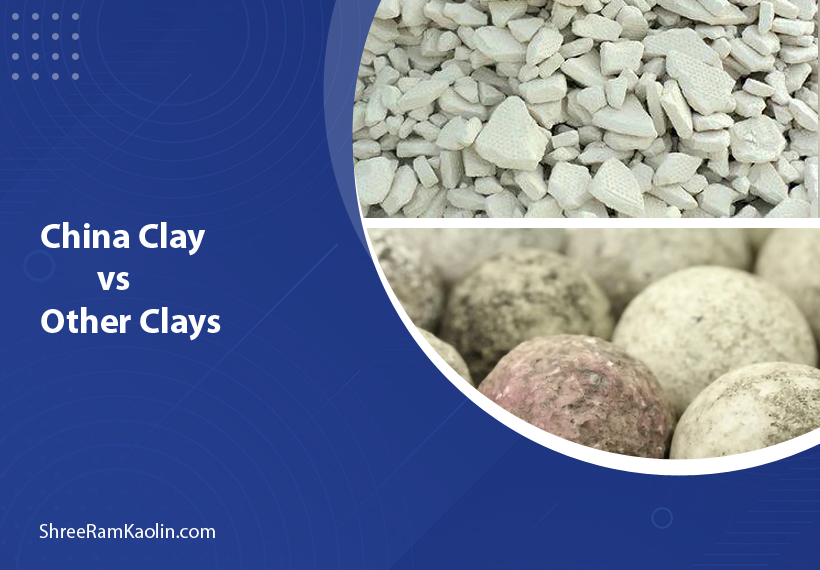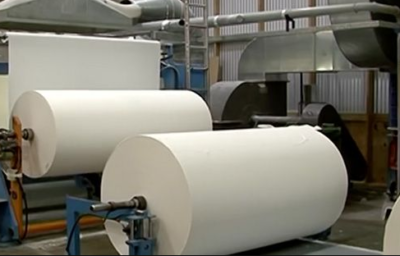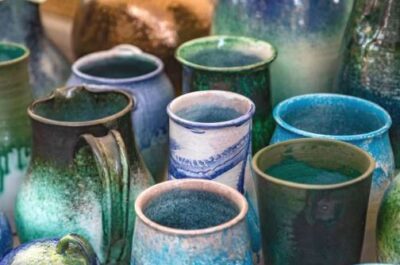China Clay vs Other Clays: Understanding the Key Differences

Clay is an extremely useful material used by humans for millennia. From pottery production and construction, to industrial applications and even medicine – clay has long played a pivotal role in our daily lives.
However, not all types of clays are the same! In this article we’ll delve deeper into this fascinating world and highlight differences between China clays and other types.
What is China Clay?
China clay (commonly referred to as kaolin) has quickly come into prominence thanks to its unique properties. Originating in a Chinese region where first discovered, this substance now plays a prominent role across a multitude of industries worldwide.
Overview of Other Clay Types
Before discussing China clay further, it’s essential to acknowledge its other forms. These include ball clay, fire clay and bentonite clay among many others – each type has unique uses and properties which set it apart from China clay.
The Unique Properties of China Clay
Chemical Composition
China clay’s unique properties stem from its composition with the mineral kaolinite, setting it apart from other clays and making it valuable in various applications.
Physical Characteristics
Color and Appearance
China clay stands out due to its distinctive white hue. This purity in color makes China clay highly sought-after across industries that rely heavily on whiteness such as paper production or ceramic production. Particle Size and Structure on the other hand, make China clay even more sought after for use as paper making pigment or ceramic glaze material. Particle Size and Structure (PP&S).
Particle Size and Shape
China clay particles are typically smaller and more uniform in shape compared to other clay types. This characteristic contributes to its smooth texture and plasticity, making it ideal for fine, detailed work.
Comparing China Clay to Other Clay Types
China Clay vs Ball Clay
While both are used in ceramics, ball clay is typically more plastic and has a higher iron content, giving it a darker color. China clay, on the other hand, is prized for its whiteness and purity.
China Clay vs Fire Clay
Fire clay is known for its high heat resistance, making it ideal for applications involving extreme temperatures. China clay, while heat-resistant to some degree, is more valued for its whiteness and fine particle size.
China Clay vs Bentonite Clay
Bentonite clay is a type of clay that can absorb a lot of water and expand in size. This makes it useful for things like drilling mud (a thick liquid used in drilling) and as a sealant to block leaks.
Applications and Uses
Industrial Applications of China Clay

China clay finds widespread application across multiple industries, from paper production (where it serves as filler and coating material) to rubber production, plastic production and paint making (thanks to its white hue and fine particle size).
Artistic and Crafting Uses
Ceramics and Pottery

China clay has long been recognized for its superior qualities as a ceramic material, providing a white base to add glazes while its fine particle size permits intricate porcelain work with intricate detail.
Paper Making
The paper industry heavily relies on China clay. It’s used both as a filler to improve opacity and as a coating to enhance surface smoothness and printability.
Environmental Impact and Sustainability
Mining Practices
The extraction of China clay, like any mining operation, has environmental implications. However, modern mining practices are focusing on minimizing these impacts and ensuring sustainable extraction.
Eco-Friendly Alternatives
As environmental concerns grow, researchers are exploring alternatives to China clay in some applications. These include using recycled materials or developing synthetic alternatives that mimic the properties of China clay.
The Future of Clay in Industry and Art
Technological Advancements
Advances in technology are opening up numerous possibilities for using China clay. From nanotechnology applications to 3D printing, its potential usage continues to expand exponentially.
Emerging Trends
Demand for eco-friendly materials is changing the future of clay use, leading to more responsible mining practices and new clay-based materials with enhanced properties.
FAQs
Can China clay be used interchangeably with other clay types?
While China clay shares some properties with other clays, its unique characteristics make it better suited for specific applications. It’s not always interchangeable, especially in situations where its whiteness or fine particle size is crucial.
Is China clay more expensive than other clay types?
Generally, China clay tends to be more expensive due to its purity and specific properties. However, prices can vary depending on quality and market demand.
How does China clay impact the environment compared to other clays?
All clay mining has environmental impacts, but China clay mining can be less destructive than some other types due to its typically shallower deposits. However, the specific impact depends on mining practices and location.
Can China clay be found outside of China?
Yes, despite its name, China clay deposits are found in various parts of the world, including the UK, US, and Brazil.
Conclusion
China clay stands out among other clay types due to its distinctive properties and versatility, being white in hue, fine particle size and adaptable nature – qualities which make it invaluable in both industry and art. By understanding and studying various clay types more closely we open up new avenues of their application in various settings and industries; whether a ceramicist, industrial engineer or simply interested in materials shaping our world; understanding China clay’s distinctive properties provides valuable insights into this extraordinary natural resource!

